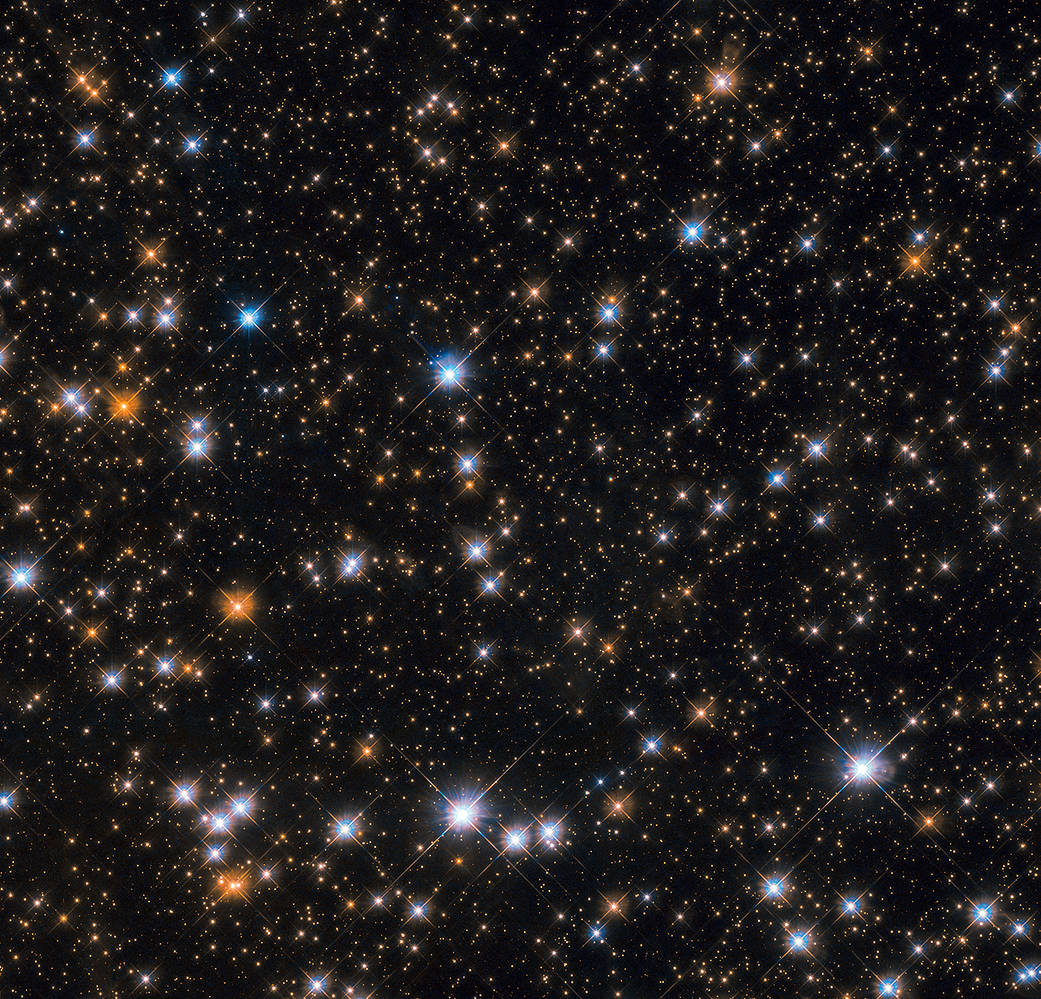这张星图向我们展示了Messier 11的一部分,Messier 11是位于盾牌座的一个疏散星团。Messier 11号也被称为野鸭群,因为它最亮的星星形成一个“V”形,有点像飞行中的一群鸭子。
Messier 11是目前已知的最丰富和最紧凑的疏散星团之一。通过研究星团中最亮、最热的主序恒星,天文学家估计它大约形成于2.2亿年前。疏散星团往往比更紧密的球状星团包含更少、更年轻的恒星,Messier 11也不例外:它的中心有许多蓝色恒星,是该星团数千颗恒星中最热、最年轻的恒星。
与球状星团相比,疏散星团的寿命也相对较短;星系团中的恒星彼此距离较远,因此引力对彼此的约束力不那么强,从而更容易、更快地被更强的引力吸引走。因此,Messier 11很可能在几百万年后就会散开,因为它的成员一个接一个地被抛出,被附近的其他天体拉走。
Messier 11出现在哈勃的梅西耶星表中,其中包括一些可以从地球北半球观测到的最迷人的天体。点击一下链接查看NASA处理的图像及其他梅西耶星系:https://www.nasa.gov/content/goddard/hubbs-messier。
This star-studded image shows us a portion of Messier 11, an open star cluster in the southern constellation of Scutum (the Shield). Messier 11 is also known as the Wild Duck Cluster, as its brightest stars form a “V” shape that somewhat resembles a flock of ducks in flight.
Messier 11 is one of the richest and most compact open clusters currently known. By investigating the brightest, hottest main sequence stars in the cluster, astronomers estimate that it formed roughly 220 million years ago. Open clusters tend to contain fewer and younger stars than their more compact globular cousins, and Messier 11 is no exception: at its center lie many blue stars, the hottest and youngest of the cluster’s few thousand stellar residents.
The lifespans of open clusters are also relatively short compared to those of globular ones; stars in open clusters are spread farther apart and are thus not as strongly bound to each other by gravity, causing them to be more easily and quickly drawn away by stronger gravitational forces. As a result, Messier 11 is likely to disperse in a few million years as its members are ejected one by one, pulled away by other celestial objects in the vicinity.
Messier 11 is featured in Hubble’s Messier catalog, which includes some of the most fascinating objects that can be observed from Earth’s Northern Hemisphere. See the NASA-processed image and other Messier objects at: https://www.nasa.gov/content/goddard/hubble-s-messier-catalog.







